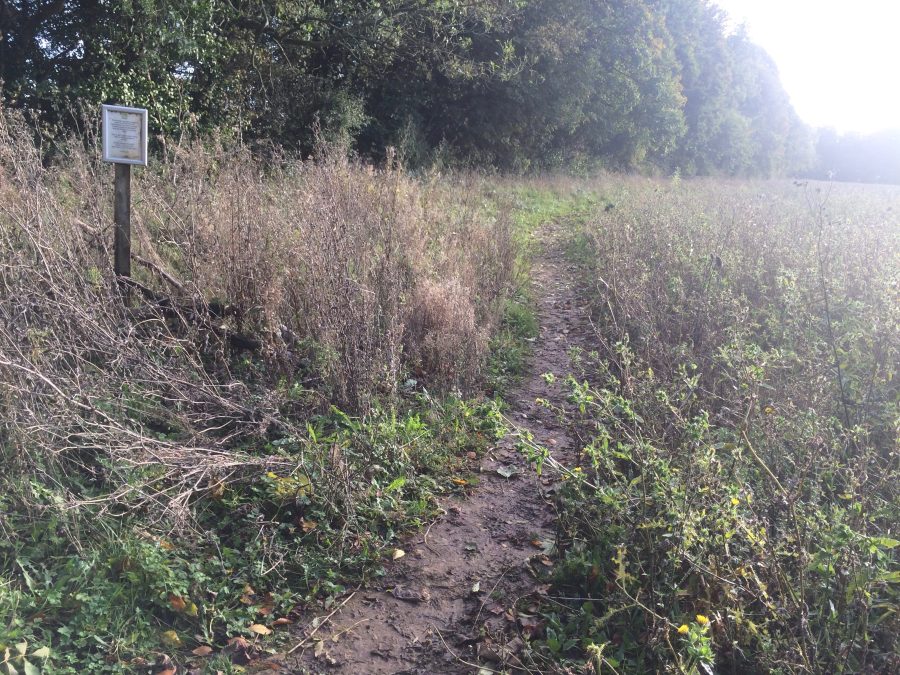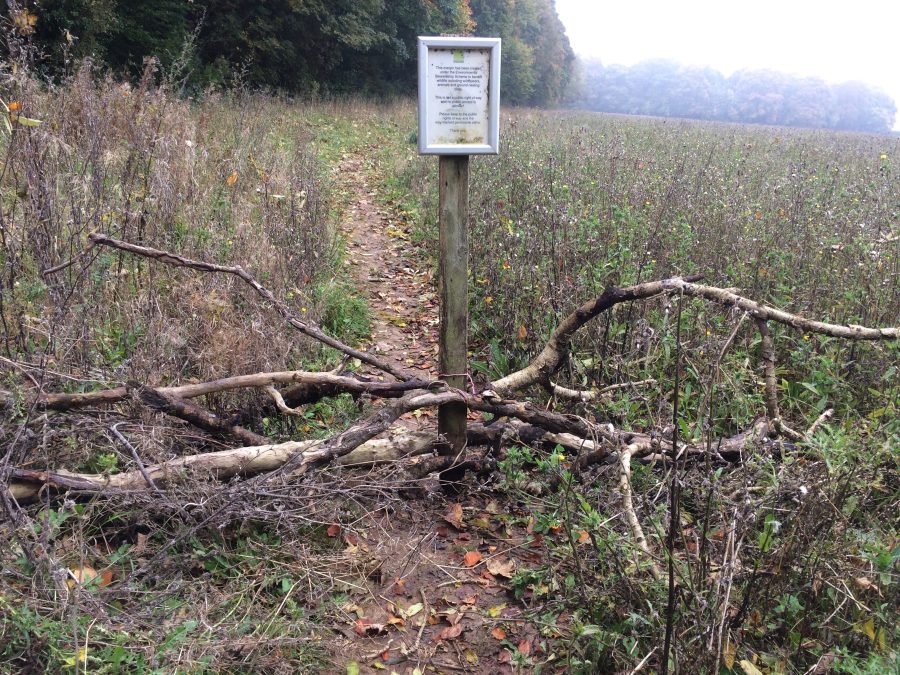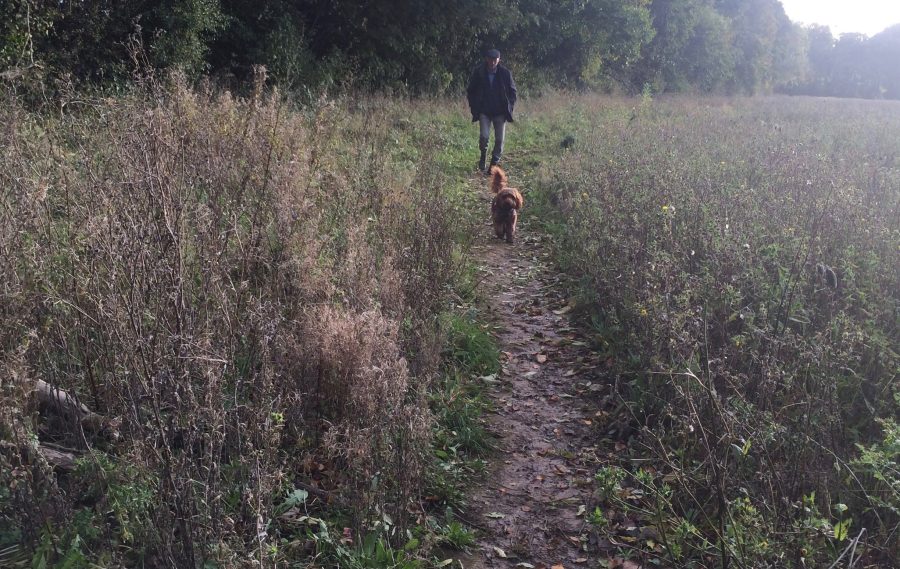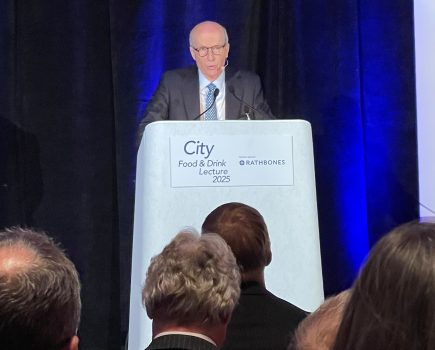We are a prickly lot when we find folk wandering off piste on our farms, quick to point out possible trespass or ask: “How would you like me wandering around your garden?”
Ownership does something to one’s ideas of self which isn’t attractive. Should we be quite so possessive and self-righteous, or perhaps be more prepared to share where we live and work? I have long shared the NFU view that farmers are the best custodians of the land, but am I right? Are they right?
I have just read a couple of inflammatory books that question my stance. The Trespassers Companion by Nick Hayes and The Lie of the Land by Guy Shrubsole both advocate greater freedom to roam the countryside. Both books are well researched and engagingly written, though not comfortable reading. Have they a case?
Farms are definitely dangerous places, with heavy machinery trundling at speed around fields, cultivating and harvesting. Anything that can’t get out of the way quickly under its own steam is toast. It is therefore hardly surprising that silage fields, cut every six weeks, are ecological disasters.
Arable fields are too often sprayed to oblivion and one can never be certain that the local young bloods haven’t found the ripening corn or tall hay fields too tempting. Indeed I have once, wandering across a hay field, come across a couple in flagrante delicto. They were lucky on that occasion; I could sidle past unnoticed.
Even the most placid of cows with calves can be unpredictable for walkers with dogs, who are woefully ignorant of animal behaviour or how to anticipate and adapt. No year passes without avoidable fatalities (although the people at most risk of serious injury are those of us who work the farms).
The flip side of all this is that open spaces are essential for people’s mental health and sense of wellbeing. They are also educational, but increasing access to the countryside can conflict with active farming.
Greater public access also increases pressure on wildlife that is already in trouble, even on farms that are nature friendly. Our small suburban farm, originally laid out as the park to a long-gone estate, is under considerable pressure from walkers, dogs and occasionally cats on our footpaths. Most people seem oblivious to our environmental efforts but stick to the permitted and public paths.
Some enjoy the many birds and wild plants and offer appreciative comments. A small proportion of recidivists, however, take the view that the whole farm is open, use dog poo bags to decorate bushes and drop drink cans, vapes and sweet packets or the remains of alfresco lunches.
This small cohort seem immune to polite persuasion and pleas to give our wildlife the space it needs, so then it becomes a game of erecting barriers to prevent paths forming on fragile, botanically rich margins, as demanded by our stewardship agreement.
University researchers often need suitable farms for projects and we regularly have folk studying the flora or fauna of margins, hedges, fields and woods. We welcome serious study and all have been careful, courteous and appreciative. It all adds to the body of knowledge about farms and the farmed environment, with the hope that we can reverse significantly the dire state of our environment. The more objective research we can facilitate, the better we are equipped to restore ecosystems.
Notwithstanding all this, is the current system of land ownership right for modern times, and are the present owners actually the best custodians of the land? Probably not on both counts, and self-regulation has a bad record wherever it really matters.
We must remember that our current system of ownership is pretty recent, dating from the enclosures, which were little more than land grabs by the rich and powerful, replacing the ‘commons’ with more profitable sheep. This was further formalised by the land registry recording land tenure, but, even today not all lands are registered.
An online search provides valuable information on land ownership. Huge acreages are owned by charities like the National Trust and RSPB, limbs of governance such as councils, the Forestry Commission and the MOD, investment vehicles like privatised utilities, hedge and pension funds, the Crown, a clutch of dukes and lastly a cluster of billionaires.
It is obvious that coherent coordinated management of land is unlikely, considering the range of priorities each will have from maximizing returns, from solid blocks of alien conifers to the trivial pastimes of shooting grouse a few days each year or hunting some stags.
Most of these acres are in the uplands, unsuitable for food production but essential for mitigating global heating, water management and biodiversity loss. They are also the best place to allow greater, but regulated, public access.
Since the consequences of climate change, floods and ecological loss are national issues, there is a strong case for unifying the nation’s approach, either through better regulation or, better still, the state acquiring most of this land as a national asset to deliver these urgent national priorities. Money currently used to encourage upland stewardship would be diverted to deliver national aims rather than enhancing private pockets. Such a policy change would yield huge environmental gains economically with no loss in food production.
Lowland farms perhaps should remain in private, but not corporate, hands; the main bread basket of food production alongside environmental gains through supported, nature-friendly measures and some controlled public access. The current evidence is that smaller, mixed farms deliver most environmental gain.
I have changed my views and consider patchy private ownership of the uplands is incompatible with combating climate change and ecological degradation. Increased public access would help monitor progress and hold government to account. This needs political skill, determination and muscle, but is it there? Or are we going to hell in a handcart?

Making paths past a notice

New barrier and notice!
For more like this, sign up for the FREE South East Farmer e-newsletter here and receive all the latest farming news, reviews and insight straight to your inbox.







